2024 - 2025
Healthy Brain Study Annual Report
In the past year, the Emory Healthy Brain Study has been focused on identifying biomarkers to predict Alzheimer’s disease and other dementias. In 2024, we achieved remarkable milestones and have begun drawing results using data collected from our participants. Discover the data we’ve gathered, meet the team behind the research, and learn about the participants who helped us get there.
If you had a chance to change the world, would you?
If you had a chance to end Alzheimer’s disease, would you? Welcome to the Emory Healthy Brain Study. This is your opportunity to partner with leading physicians at Emory University and help make discoveries that will change our understanding of Alzheimer’s disease for generations to come.
It’s your contribution to a better future.

Our 3,000 Goal
3,000 participants. That’s the number we’re aiming for, and we’re proud to say we’re 76% of the way there. We’re starting earlier; instead of trying to treat current diagnoses, we are looking for a diverse group of healthy individuals who are not experiencing symptoms of Mild Cognitive Impairment or dementia to enroll in the study. Our participants come from all walks of life. Because of the diversity required for this study, we utilized several different methods to reach potential candidates.
Follow-up Visits
Baseline visits are important but so are follow-up visits, and we are excited to announce participants have begun completing their fifth visit. By having participants return every two years, we can track changes within the body as we age. We can then look closely at these changes for the biomarkers that will help us predict who will develop Alzheimer’s. If you are unsure when your next visit will be, reach out to us at healthybrainstudy@emory.edu.

Longevity
After pilot grants from The Goizueta Foundation enabled design and early implementation of the Emory Healthy Aging Study and Emory Healthy Brain Study, the National Institute on Aging awarded the studies federal funding. Announced in February 2021, the grant guarantees that the Emory Healthy Brain Study will continue to lead the way in Alzheimer’s disease research.
How can you get involved?
Help us change our understanding of aging and age-related diseases for generations to come. It’s your contribution to a better future.
Have you seen our space?
Located at 6 Executive Park Drive across from the Emory Brain Health Center, the Alzheimer’s Clinical Research Unit houses many of Emory’s cognitive neurology programs including the Emory Healthy Brain Study. Below is a virtual tour that will let you experience our incredible facility prior to your next visit.
Participants
Meet the people who made it all possible - our participants. Their willingness to volunteer their time to our research has led to some astounding discoveries.
Shaping the Future of Brain Health: A Participant Engagement Event
This year at our annual participant engagement event, Shaping the Future of Brain Health, more than 250 guests enjoyed a luncheon while listening to a panel of three speakers consisting of Dr. James Lah, Jalayne Arias, and Dr. Marla Gearing. Topics included an overview of where our research is now, how to manage information you learn through a study, and frequently asked questions about brain donation. Guests were also able to speak with representatives from the Emory Healthy Brain Study, Georgia Memory Net, the Precision Aging Network, and the Cognitive Empowerment Program to learn more about each of the studies and programs they offer. From the post-event survey, attendees mentioned how much they enjoyed the presenters’ panel discussion, venue, and meal options.
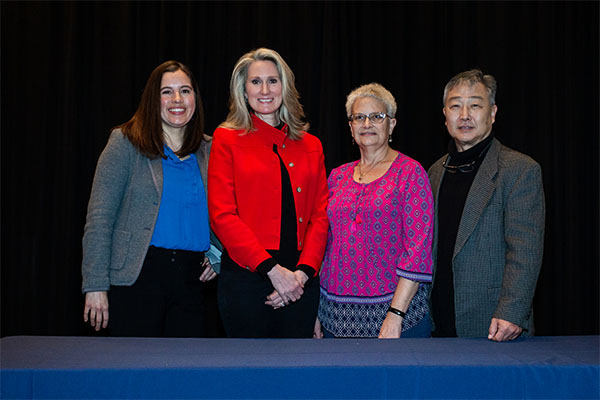




Participants by Age
It can take years for symptoms of Alzheimer’s disease and other dementias to manifest. By working with candidates before they exhibit symptoms, we hope to identify biomarkers that will enable us to predict disease. With an effective means of prediction, we can then focus more on treatment and even prevention.
Participants by Gender & Race
We strive for diversity within the Emory Healthy Brain Study. It’s important that our research discovers how different people from all walks of life show signs of dementia and Alzheimer’s. So far, a large portion of our volunteers has been Caucasian females.
To understand how biomarkers may differ across race, we strive to have diversity amongst our participants. Minority groups, specifically African Americans, are afflicted by Alzheimer’s and dementia at higher rates than Caucasians. In fact, African Americans are twice as likely to develop Alzheimer’s disease compared to Caucasians. For this reason, we are striving to increase the diversity of our cohort. Several recent initiatives include a minority engagement group that leverages the expertise of Monica Parker, MD, Clint Dye, PhD, Cornelya Dorbin, MPA, Crystal Davis, and Antoine Trammell, MD. Through their efforts, the Brain Talk Live webinar, which averages 200 weekly viewers, is now comprised of more than 50% African Americans. They have also established a Minority Men’s Health Discussion series that is hosted monthly, have partnered with Dr. Ambar Kulshrestha to diversify the Asian American cohort, and their OREC (Outreach, Recruitment, and Education Core) is working to expand outreach to the LGBTQ+ population.


Empowering Minds and Bodies: GADRC’s Minority Men’s Health Program Advances Health Equity
Now approaching its third year, the Minority Men’s Health (MMH) program at the Emory Goizueta Alzheimer’s Disease Research Center (GADRC) continues to make significant strides in promoting health equity among men of color. Launched virtually in December 2021, the program was created to engage the community while encouraging participation in clinical research studies focused on Alzheimer’s disease and mild cognitive impairment.
Since its inception, the MMH program has evolved but remains true to its mission of delivering essential health information and providing opportunities for clinical research enrollment, particularly for Black men. Held on the second Thursday of each month, the program offers a platform for a diverse range of medical professionals to address key health issues affecting the community. Topics have included kidney health, eye care, and maintaining overall well-being during the holiday season.
The program is free to attend and provides more than just education. Each session features live music, refreshments, and exercise demonstrations to create an engaging and interactive experience for participants.
A recent study from the Centers for Disease Control and Prevention (CDC) highlighted that African Americans are more likely to develop Alzheimer’s disease than their white counterparts, yet they are less likely to participate in clinical research. This disparity raises important questions about how treatments affect African Americans differently. The MMH program is one of several initiatives led by GADRC's Minority Engagement Core, aimed at closing this gap in research participation and addressing broader health disparities.
As the program enters its third year, the GADRC remains committed to expanding the reach and impact of this critical initiative, continuing to empower minds and bodies in the fight for health equity. For more information and registration assistance, please contact Crystal Davis at crystal.p.davis@emory.edu.
Health History Questionnaire
Participation in the Emory Healthy Brain Study begins with the completion of our Health History Questionnaire. This data collection process helps us better understand how we age and age-related diseases. It’s not uncommon for study participants to report a variety of health conditions, and we consider these factors when looking for predictive biomarkers.
How often do you read books on paper or electronically?
Have you ever smoked cigarettes regularly?
How many hours of sleep do you usually get at night?
Do you smoke now? (Excludes people who have never smoked)?
Research
By identifying predictors of Alzheimer’s disease, we may be able to slow, treat, or even prevent it someday. Supporting the researchers is a dedicated team that leads participant visits, collects samples, and participates in outreach.
What have we learned from our participants’ contributions?
Data collected from participants within the Emory Healthy Brain Study is being used to help our researchers with their work on several studies. Read below to learn more about our recent discoveries.
On the differences Found in Cerebrospinal Fluid from African Americans and their White Counterparts
African Americans are at higher risk of developing dementia in late life but are often underrepresented in research. Emory researchers helped conduct a study aimed at exploring the differences in cerebrospinal fluid (CSF) biomarkers between self-identified Black/African Americans and White/Caucasian individuals with and without Alzheimer’s disease (AD). Researchers analyzed 1,840 proteins in CSF samples from 105 control individuals and 98 AD patients, with roughly equal number of samples from Black and White individuals. They found that Tau protein levels increased more in Whites with AD compared to African Americans with AD. While some protein changes related to AD were similar across races, others differed significantly. For example, proteins associated with glycolysis, the breakdown of glucose, and the cytoskeleton, including Tau, were higher in Whites, whereas synaptic proteins were lower in African Americans with AD. These proteins were particularly effective at identifying AD in African Americans. The results found in this study offer new insights into how AD biomarkers vary by race and could help improve diagnosis and understanding of the disease across different populations. Read more here.
On the Impact of Air Pollution on Cerebrospinal Fluid Biomarkers
Researchers have now been able to link air pollution as being a potential factor for cognitive decline and Alzheimer’s disease (AD). This study explored how exposure to fine particulate matter (PM2.5) from ambient and traffic sources over one, three and five years affects cerebrospinal fluid (CSF) biomarkers related to AD in 1,113 cognitively healthy adults. The analysis revealed that higher exposure to ambient PM2.5 was linked to changes in CSF amyloid levels associated with plaque buildup. While similar trends were observed for traffic-related PM2.5, they were not statistically significant. Other CSF biomarkers that are associated with AD such as Tau showed no significant associations with PM2.5 exposure. The study ultimately found that one year of exposure to fine particulate matter did increase the chance for a buildup of amyloid plaques in the brain and result in an increased risk of developing AD. Read more here.
On Eye-Tracking Technology…
Emory researchers have developed a test called the Visuospatial Memory Eye-Tracking Test (VisMET) to identify memory problems in under five minutes on an iPad. By tracking how people’s eyes move while they view images, we can assess their cognition. Because individuals are just asked to view and enjoy pictures, the task is less stressful than challenging people to try to memorize and recall long lists of words. In testing with 250 people, this mobile version was 76% accurate in detecting memory impairment, which is comparable to more expensive, specialized equipment. This means that with the widespread use of tablets, this mobile test could be a valuable tool for improving access to memory testing. Read more here.
On Arterial Stiffness Being a Good Indicator of Cognitive Decline…
High blood pressure is known to increase the risk of Alzheimer’s disease, but its impact on a person’s cognition is not entirely clear. In a study conducted by researchers looking at 630 older adults, they found that higher arterial stiffness (which refers to reduced ability of an artery to expand and contract in response to pressure changes) measured by pulse wave velocity (PWV), was linked to lower levels of a key brain protein associated with Alzheimer’s and a higher likelihood of preclinical Alzheimer’s. However, regular blood pressure did not show a similar connection. This suggests that PWV might be helpful in identifying people who may be at higher risk for developing Alzheimer’s disease. Read more here.
On the Use of Automated Analysis of Facial Emotional Expression…
In a study of 493 people, Emory researchers used a deep learning model to analyze facial expressions during a memory test. They found that those with cognitive impairment showed fewer positive and more negative emotions compared to those with normal cognition. This difference helped them identify cognitive impairment effectively, regardless of factors like age and education. While they couldn’t pinpoint the specific cause of the impairment, these findings suggest that analyzing facial emotions could be a useful and non-invasive way to screen for cognitive issues. Read more here.
Drug Infusions for Alzheimer’s Disease: Frequently Asked Questions
Many patients and families have been wanting to know more about the recently announced drug infusions for Alzheimer’s disease. This document shares answers directly from Emory providers about these new drugs, their FDA approval, availability, and more.
Alzheimer’s Myths Quiz
There are a plethora of myths about Alzheimer’s disease out there according to the National Institute of Health1. Take the true or false quiz below to see if you’ve fallen for any of them.
Brain and Spinal Cord Donation Program
The Emory Healthy Brain Study is dedicated to advancing research on Alzheimer’s Disease and other neurodegenerative diseases. For most people, the time immediately following the death of a family member is very difficult. Discussing the decision to donate your brain and spinal cord with your family and making the necessary arrangements is best done well in advance of disease progression or death.
Why is it important to examine the brain and spinal cord of individuals who do not have memory loss or Alzheimer’s disease?
Healthy brains are equally, if not more important, to study. The brains and spinal cords of individuals with mild cognitive impairment (MCI) and Alzheimer’s disease can provide a wealth of information about abnormal brain changes and how they are different from normal aging. However, the brains of individuals without neurodegenerative disease also offer a wealth of information about aging and neurodegenerative disease diagnosis. Unfortunately, most people don’t recognize the importance of brain and spinal cord donation. Without healthy brains for comparison, scientists cannot determine precisely which brain and spinal cord changes are related to disease and which are related to aging. For more information about the importance of brain and spinal cord donation visit the Brain Donor Project, a national organization focused on increasing brain donation to advance science, leading to the treatment and cure of neurological, neuropsychiatric, and neurodevelopmental disorders.
Where is the brain and spinal cord donation performed?
Individuals enrolled in the Emory Healthy Brain Study will be brought to Emory University Hospital where our autopsy team will remove the brain and spinal cord. If you live outside the Metro Atlanta area and the body cannot be transported to Emory, our team will work with the family to identify a local pathologist who is willing to do the brain and spinal cord removal and send the tissue to us for examination. The Emory Healthy Brain Study autopsy coordinator can help you locate a pathologist in your area.
What are researchers looking for when examining the brain and spinal cord?
A neuropathological examination of healthy brains and brains showing neurodegenerative changes provides researchers with a host of neuropathology data, such as abnormal proteins, that are part of clinical and research diagnosis. Donated tissues are also shared with other researchers and used for discovery research.
Learn more about the Brain and Spinal cord Donation Program here.
Alzheimer’s Disease vs. Dementia
Dementia is a generic term for severe deterioration of memory and other cognitive abilities. It can be caused by many different disorders that impair the function of the brain. Alzheimer’s disease is the most common form of dementia, and accounts for 60-80% of cases.2
The development of Alzheimer’s disease should not be considered a part of “normal aging”, although advanced age is the greatest risk factor. The most common symptom in the beginning is trouble remembering new information. Other symptoms include mood and behavior changes, confusion, disorientation, and eventually patients have trouble speaking and walking. As the disease progresses, the severity of symptoms increases, and eventually leads to death.
When a patient with cognitive problems goes to the doctor, the first thing the doctor does is rule out other possible causes, some of which can be treated (such as infections, interactions of certain medications, vitamin deficiencies). When all other possible causes have been ruled out, a diagnosis of Alzheimer’s disease is made.
Alzheimer’s disease is the most common form of dementia, and accounts for 60-80% of cases.
Physical Changes in the Brain
Evidence currently indicates that the root cause of Alzheimer’s is the accumulation of plaques and tangles in the brain. Plaques are created when beta-amyloid protein collects in between nerve cells in the brain, and tangles are a result of tau protein build-up within cells. This change in structure causes many other things to go wrong, and eventually leads to the deterioration of the nerve cells and their connections, which in turn causes dementia.
Current clinical trials are designed to prevent beta-amyloid and tau from accumulating, and to preserve the function of nerve cells. There are many potential ways to approach this therapeutically, but we don’t yet know which ones are most likely to lead to successful treatments; this is why we need a variety of clinical trials.
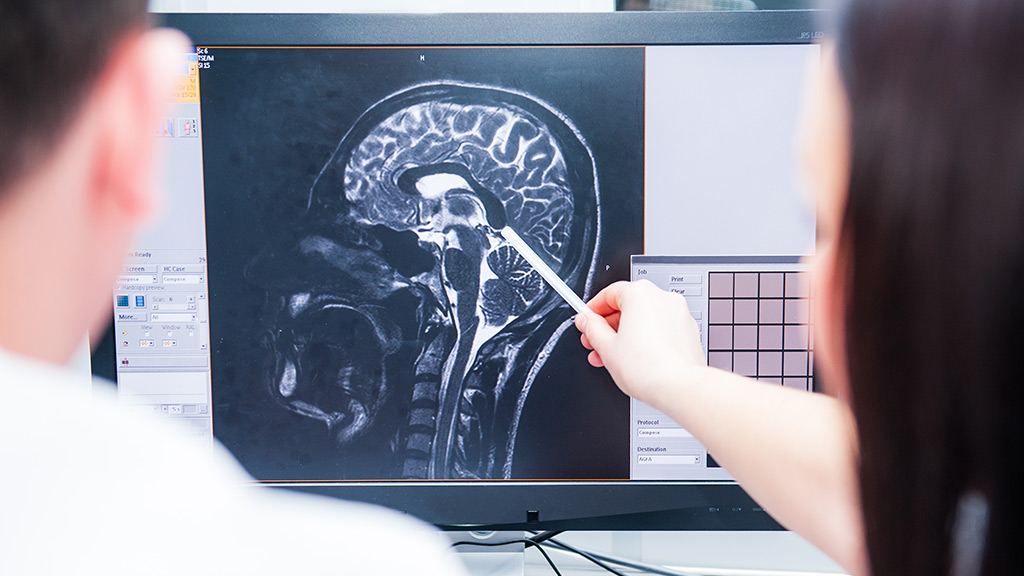
Enrichment Criteria
Enrichment criteria in a research study refer to specific characteristics or factors used to identify and select a subset of participants from a larger population who are more likely to benefit from, respond to, or be at risk in the context of the study. These criteria help improve the study's efficiency, enhance the reliability of the results, and reduce variability.
Common enrichment criteria might include genetic markers, biomarkers, demographic factors, clinical characteristics, or other relevant traits that align with the research objectives. Using enrichment criteria, researchers can focus on a targeted group, increasing the likelihood of meaningful and actionable outcomes.
Family History
Individuals who have a first-degree relative who has been diagnosed with Alzheimer’s disease are more likely to develop the disease as well. It’s also important to note that multiple family members with a diagnosis increases this risk even more. Typically, if a disease is seen in multiple generations of a family, there may be a genetic component contributing to its development. Researchers have found several genes that increase the risk of Alzheimer’s. Apolipoprotein E-e4, or APOE-e4, is the first gene identified. These so-called "risk genes" only increase the chances, but do not allow physicians and researchers to definitively say that an individual will develop the disease.
Cardiovascular Disease and Diabetes
If you think about the way the body is designed, it’s not hard to imagine that cardiovascular health could have a large impact on the development of Alzheimer’s disease. The heart is responsible for pumping oxygenated blood to our organs, and the brain has one of the densest concentrations of blood vessels in the body. Thus, when a conditions compromises this ability, either by damaging the heart or the blood vessels, the brain doesn’t receive as much oxygen and function decreases. These conditions, including heart disease, diabetes, stroke, high blood pressure, and high cholesterol, increase the risk of developing Alzheimer’s disease. Studies have also suggested that the presence of plaques and tangles is more likely to lead to Alzheimer’s disease if the blood vessels have been previously damaged.
African Americans and Latinos
According to the Alzheimer’s Association, African Americans are twice as likely to develop Alzheimer’s disease when compared to Caucasians, and those individuals with Latin heritage are one-and-a-half times more likely. It is extremely important for the quality and accuracy of our data and conclusions that we include participants from all different backgrounds in this study.
Sources
1. 12 Myths About Alzheimer’s Disease (2023, October 26). Retrieved September 6, 2024 from https://www.nia.nih.gov/health/alzheimers-and-dementia/12-myths-about-alzheimers-disease
2. What is Alzheimer’s? (2007, January 7). Retrieved May 1, 2018, from https://www.alz.org/alzheimers_disease_what_is_alzheimers.asp
Meet the Study Team
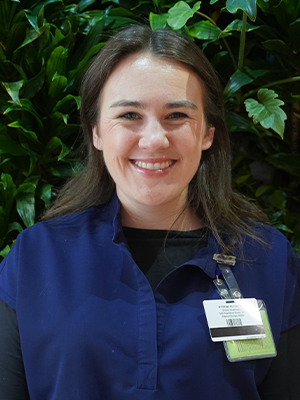



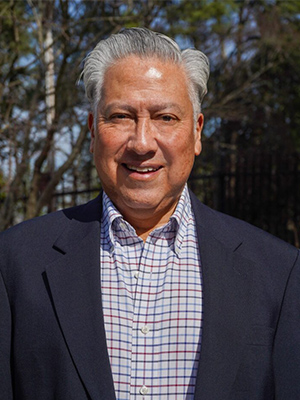

















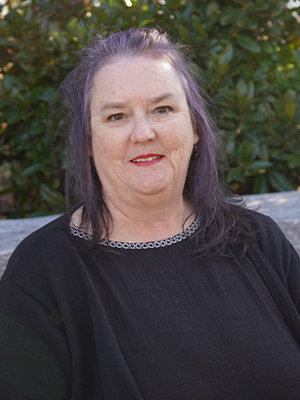








Procedures
The variety of measurements and samples collected provide us with a wealth of data points to examine.
Questionnaires
Health History Questionnaire
We ask all study participants to complete the Health History Questionnaire (HHQ) when they first enroll in our study. The information that participants provide is critical for our efforts to study aging as part of the Emory Healthy Aging Study, and, more specifically, cognitive aging as part of the Emory Healthy Brain Study. In addition to basic demographic information, the information participants provide about their lifestyle, medical history, family history, and other life experiences, is invaluable. We are learning more about how daily lifestyle choices, like smoking, physical activity, and the foods we eat, influence the risk of developing Alzheimer’s disease. Knowing about a participant’s past medical and family medical history helps researchers to understand how different medical conditions in individuals and families influence the development of Alzheimer’s disease. Other information provided by the HHQ offers researchers additional avenues to identify potential factors that either increase or decrease the chances of developing Alzheimer’s disease.
PHQ-8 and GAD-7
In older adults, depression, anxiety and Alzheimer’s disease are often seen together, but the nature of the relationship is not clear. Determining how depression and anxiety are related to the development of Alzheimer’s disease in its earliest stages will clarify whether depression and anxiety simply co-occur with Alzheimer’s disease, or whether they act to increase the chances of developing Alzheimer’s disease.
Cognitive Function Instrument (CFI) Endorsements
The Alzheimer’s Disease Cooperative Study (ADCS) developed the Cognitive Function Instrument (CFI) Endorsements to determine if a subjective report of cognitive change can be used as an outcome measure in AD clinical trials. The CFI is a 14-item assessment of cognitive status, and the purpose of the CFI is to track early changes in cognitive function in older individuals without clinical impairment at baseline.
We are learning more about how daily lifestyle choices, like smoking, physical activity, and the foods we eat, influence the risk of developing Alzheimer’s disease.
Post-Visit Survey
We are currently in our eighth year of the study. Many advancements have already been made to our process, thanks in large part to comments from our constituents. However, we are continually looking to improve the experience for current and new participants. This survey, which was implemented after our first year, is a way for us to gather constructive feedback about what a visit really looks like from their perspective, and do everything in our power to make it enjoyable!

Breakdown of Biospecimens and Tests
Cognitive Testing
In the Emory Healthy Brain Study, we administer various cognitive and neuropsychological tests that measure aspects of brain function, including memory, language, visuospatial skills, attention, and higher-order thinking. These tests are validated measures used in both research and clinical practice:
- to help characterize individual cognitive abilities, such as strengths and weaknesses
- to monitor changes in functioning that may occur during the process of normal aging or as a result of disease or injury
- to better understand brain-behavior relationships
Repeated assessments using these same measures can help us understand the changes that occur across the developmental lifespan of mid-life and older adults. When we compare test scores to other aspects of health, we can elucidate the consequences of certain genetic and lifestyle practices, helping us to identify fruitful areas for health intervention and treatment.

Cardiovascular Assessments
One of the focuses of our center is better understanding the interface between the brain and heart. There is no question our cardiovascular health impacts a lot of different systems within our bodies and is why it receives as much attention as it does. What is not as well understood are the impacts our cardiovascular health has on our brains, more specifically its role in neurodegeneration and diseases like Alzheimer’s. Anyone who has seen a primary care physician is probably familiar with the routine cardio testing done. Your pulse and blood pressure are tests we’ve become accustomed to, but we’re taking it even further. For example, we now know that hypertension is more than just a blood pressure problem – there are a lot of different factors that affect this. In the Emory Healthy Brain Study, we conduct several additional cardiovascular tests:
Arterial Pulse Wave Analysis
This is also known as the arterial stiffness test, and it is used to measure the stiffness of your blood vessels. This also measures your carotid pulse.
Carotid Intima-Media Thickness (CIMT)
This scan is a non-invasive test that scans the carotid arteries in the neck to detect plaque buildup and increased thickness of the artery wall.
Electrocardiogram (ECG)
This test is a standard measurement of your heartbeat and heart rhythm.
These tests allow us to look at heart health from multiple dimensions. For example, we know microcirculatory disfunction increases the risk of heart disease.
We do not yet know which of these tests will be the most important, but we are comprehensively looking at cardiovascular health holistically to determine the what elements are impacting our brain health. By measuring traditional risk factors and taking it one step further with lab-specific measurements, we hope to increase our ability to predict the development of Alzheimer’s disease.
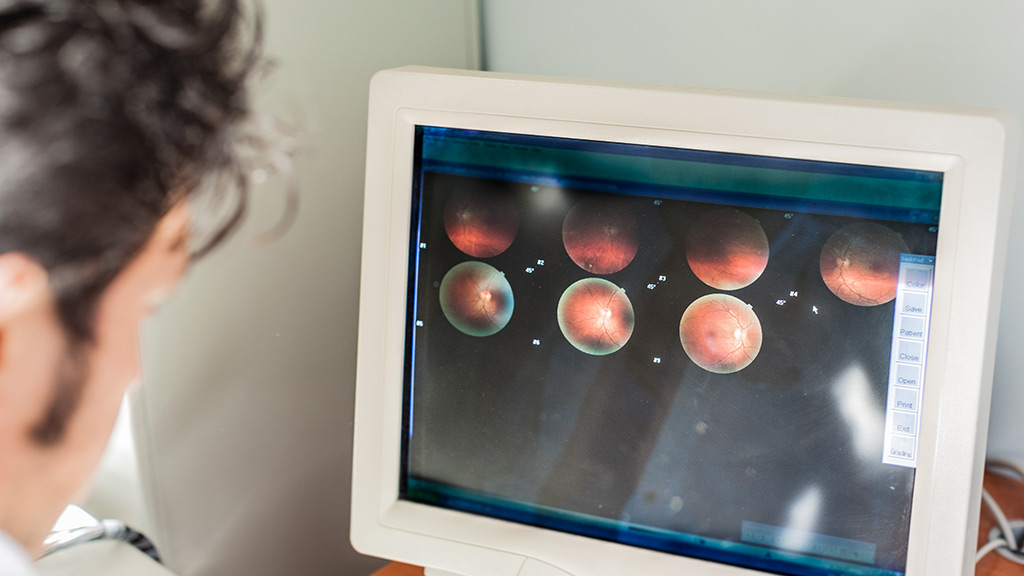
Blood and Cerebrospinal Fluid (CSF) Collection
The primary goal of the Emory Healthy Brain Study is to find new biological markers to predict Alzheimer’s disease. To help achieve that goal, we ask study participants to provide blood, cerebrospinal fluid. Each of these samples provides unique information about a person’s health.
Blood
Many substances can be measured in blood, which makes blood samples critical for research aimed at understanding Alzheimer’s disease. The information gained from blood samples can give insight into inflammation, infection, cholesterol levels, kidney and liver function, and sometimes help to predict the course of disease. We hope to find a blood test or collection of blood tests that will allow us to predict Alzheimer’s disease.
Cerebrospinal Fluid (CSF)
Just as we are looking for a blood marker for Alzheimer’s disease, we are also looking for new markers in cerebrospinal fluid (CSF) that can predict Alzheimer’s disease. CSF is produced by the brain and bathes the entire brain and spinal cord. CSF is special because it allows clinicians and researchers to detect and measure substances that tell us about brain health that cannot be measured in blood.
A portion of each participant’s blood and CSF samples are used up front for standard measures that a primary care doctor might also check, like blood cell counts, as well as standard Alzheimer’s disease research measures. These inform researchers about the overall health of participants and help understand new research results. Another portion of each sample is stored in a secure freezer and catalogued for future research as we continue to make new discoveries.
